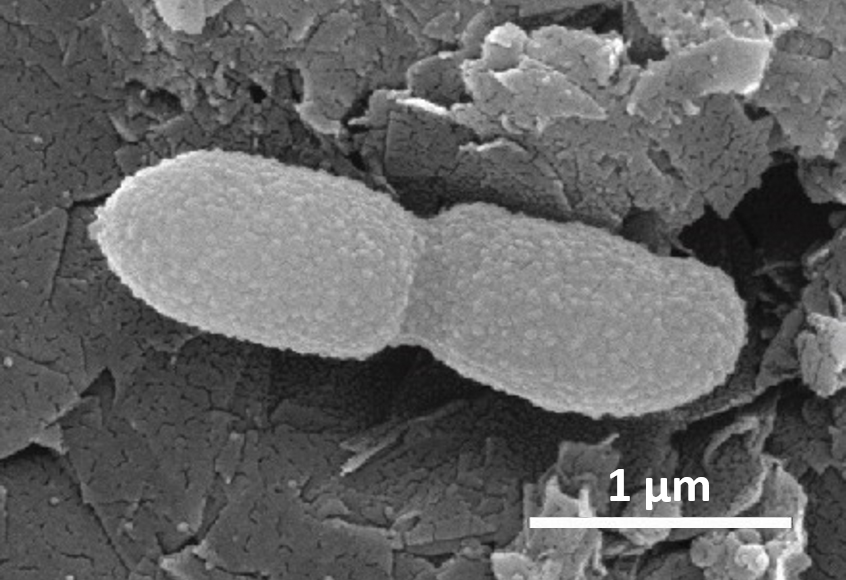Uncovering New Pieces of the Bacterial Cell Division Puzzle
By Madison Wright
7 January 2019

Studying bacterial cell division is like completing a puzzle with many pieces. It is not always clear where each piece fits, and sometimes, pieces may even be missing altogether. A new study by Prof. Cezar Khursigara and graduate student Alison Berezuk in the Department of Molecular and Cellular Biology has now identified some of those missing pieces, bringing the cell division puzzle one step closer to completion.
“Living beings are very complicated. The intricacy of bacterial growth and division is really quite fascinating,” says Berezuk.
Bacterial cells replicate by doubling their contents and then splitting into two distinct cells – an incredibly complex process that requires extensive coordination within the cell. Previous studies have shown that a protein known as FtsK is essential for this process, but its precise role was unknown. Suspecting that FtsK may be critical to the events that lead to physical splitting of the cell envelope, Khursigara and Berezuk set out to determine what proteins FtsK interacts with in the model bacterium Escherichia coli. This, in turn, would help reveal FtsK’s exact role in cell division.
The team created a strain of E. coli with a modified version of FtsK that, when exposed to UV light, will “bond” to any proteins it is interacting with, allowing researchers to isolate these latter proteins and identify them. According to Berezuk, UV-driven protein bonding is a powerful technique for studying protein interactions. “Without knowing anything about the protein, you can actually probe what it is doing in the cell and you don’t have to take it out of the biological context as you do with other techniques,” she explains.
The researchers next used a combination of liquid chromatography and mass spectrometry to identify all the proteins that interacted with FtsK. This resulted in a list of 63 different proteins – a list that held quite a few surprises.
“We were expecting to find a lot of cell division proteins, but what we found was something completely different. None of the proteins that came out were the classical essential cell division proteins,” says Berezuk.
Berezuk’s analysis revealed that a protein known as RlpA was the protein that interacted most frequently with FtsK. It was an exciting discovery because until now RlpA had no known function, and the interaction with FtsK suggests a potential target for a future antibiotic.

“If we can disrupt that interaction, then we might be able to design novel antibiotics that target this link,” says Berezuk. “And because there is no human equivalent to FtsK, the toxicity of such a drug would be low – hopefully!”
Excited by the discovery, Berezuk and Khursigara went on to conduct further experiments to define the role RlpA plays in cell division. By removing RlpA, they found evidence that its interaction with FtsK may act as a cell division “checkpoint” that delays division of a growing cell until all the proteins required for splitting into two cells are completely assembled.
This research is just the tip of the iceberg. Berezuk, who is now a post-doc in the Khursigara lab, has a large amount of information that will feed into other projects investigating the interactions and roles of the other 62 proteins.
“By studying these proteins, we can get a really good idea of how a bacterial cell works… not only for applications related to drug discovery, but also for a basic knowledge about bacterial cell biology.”
This study was funded by the Natural Sciences and Engineering Research Council of Canada.
Read the full study in the journal Scientific Reports.
Read about other CBS Research Highlights.